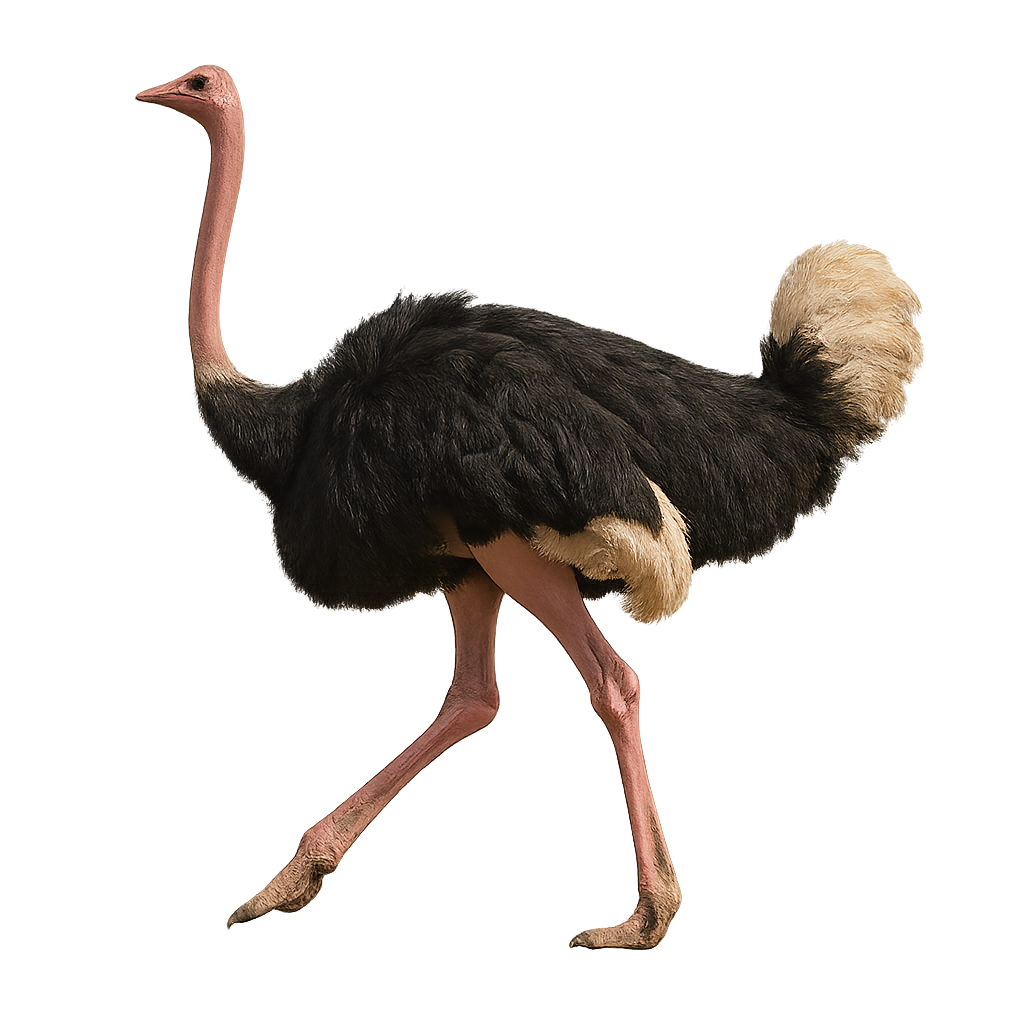Observe and photograph a species in its natural habitat
Learn where and when to observe a species in the wild, how to recognize it in the field, and what habitats it lives in. Get photography tips adapted to its behavior and capture stunning images without disturbing the animal. For full details, open the complete profile in the WildlifePhotographer app.
Ostrich
Scientific name: Struthio camelus

IUCN Status: Least Concern
Family: STRUTHIONIDAE
Group: Birds
Shyness: Shy
Safe distance: 50 m
Breeding season / Courtship: 01.05-31.07
Gestation: 42 jours
Births: 01.09-31.12
Habitat:
Savannas, deserts, and arid zones of sub-Saharan Africa, also found in parts of the Middle East
Description:
The Ostrich is the largest living bird on Earth, known for its impressive size and powerful long legs that allow it to run at remarkable speeds, reaching up to 70 km/h. Native to Africa, the Ostrich inhabits savannas and desert regions, where it primarily feeds on plants, seeds, and small insects. Although it cannot fly, its wings and plumage help it maintain balance and protect itself from the sun.
The Ostrich is a social bird, living in groups and known for its interesting defense behaviors. When threatened, it can run at high speeds to flee or crouch to blend into the ground, a method that helps it escape predators.
Recommended lens:
>=300 mm
Photography tips:
Use a telephoto lens to photograph the ostrich, especially when it is running or moving through the savanna. The soft light of the morning or evening is ideal for capturing its distinctive features and natural behavior. Be discreet and respect their space, as they can be sensitive to disturbances, especially during the breeding season.
Ready to take action?
Choose your platform and start your free trial today



